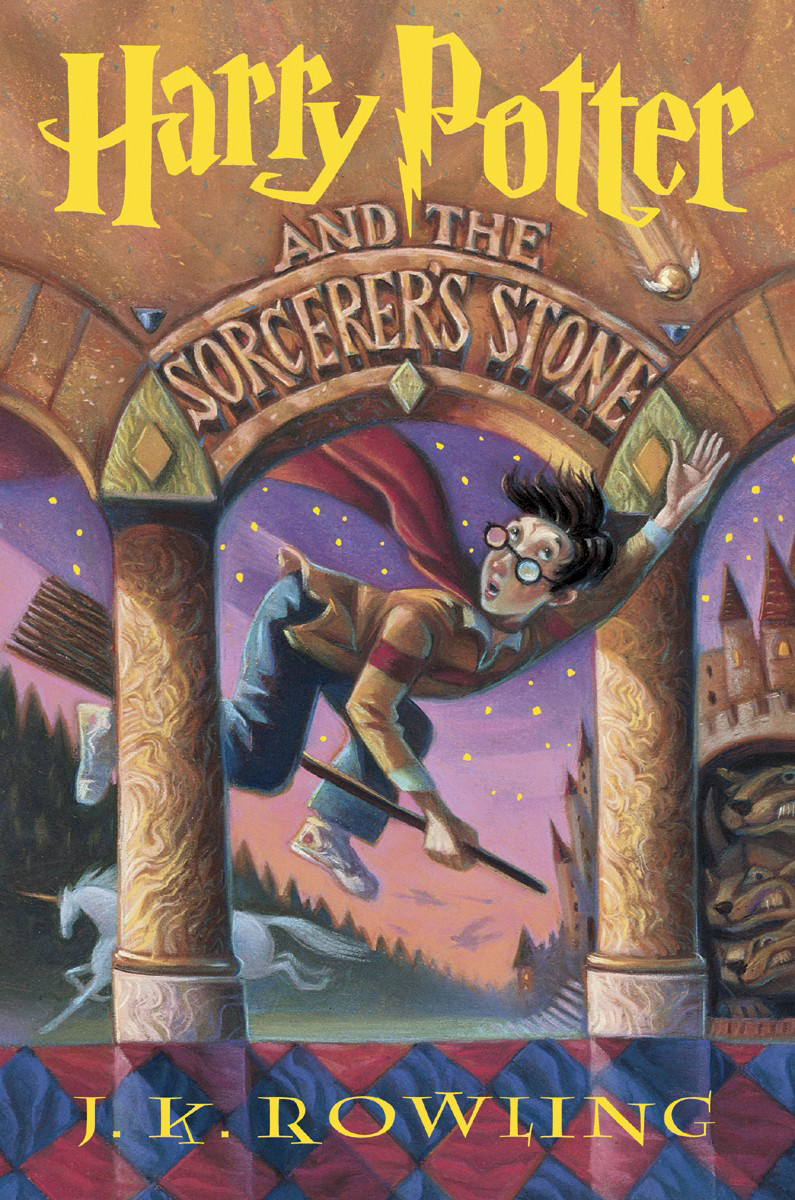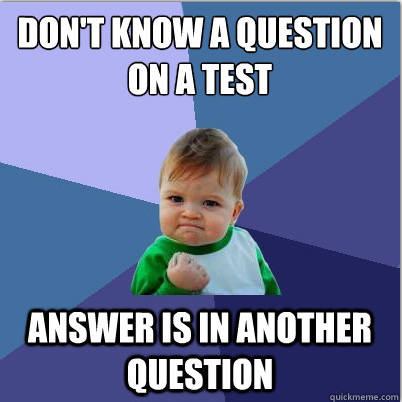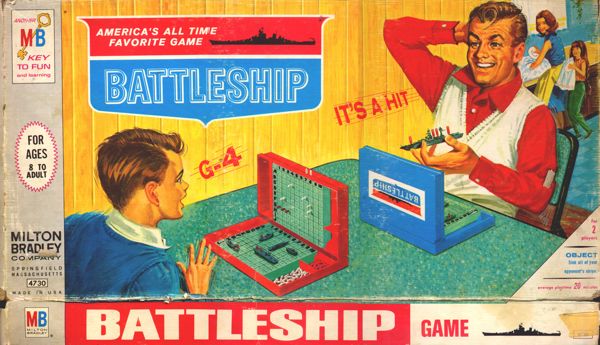Share the potent moments where BAM! one simple rhyme, song, image, activity and they GET IT...100%
Monday, December 1, 2014
Friday, November 14, 2014
UbD in Action 5-6th
Here is a current bulletin board that focuses on our writing standards. It is interactive. We can use examples of writing from our class or examples from state testing sites. Students debate what makes a piece of writing below average, average, or above average and write our reasoning on color-coded sticky notes. Students transfer their understanding of the standards and writing rubrics to judging a variety of models.
Monday, November 10, 2014
Writing Topics Graph 5-6th

We collected a quick version of our interests for starting a unit on informational writing and research processes. We were given unlimited votes, but a limited amount of suggestions for topics, due to time constraints. The graph lends itself to a quick making questions or drawing conclusion review. Seeing as I've left it up on the board, it's easy morning work for tomorrow!
Top Interests for kids: Movies, Animals, Rides, Famous People, Etymology (Names), Cars
Standards (Interests for teachers): Cause/Effect, Colonial History: Economy, Religion, Trade, Exploration
Questions Merging Any Two Categories:
1. What was the effect of the horse, pig, cow, chicken, etc. on colonial life?
2. What effects did the colonists have on the animals of North America?
3. Compare and contrast an amusement park to Colonial America.4. Who is the most important famous person from the great exploration of the New World? Why?
5. Compare a famous person from today to a famous person from the 1400's-1600's.
6. What effects did the Columbian Exchange have on animals?
7. Why were the countries and colonies in the Americas named? Explain the reasons of three commonly used names we use today that were developed in the 1500's.
8. How is transportation the same or different than the 1500's?
9. How is money the same and different from in the Colonial times?
Sunday, September 28, 2014
Saturday, September 27, 2014
Saturday, August 9, 2014
Lucy Calkins Writing Sequence
http://www.heinemann.com/shared/onlineresources/E04717/Progressions_3_Types_of_Writing.pdf
Here's the plan for Lucy Calkins writer's workshop.
Here's the plan for Lucy Calkins writer's workshop.
Monday, August 4, 2014
Saturday, August 2, 2014
Wednesday, July 30, 2014
Sunday, July 27, 2014
Wednesday, July 23, 2014
Random Discovery Model Ideas
Engineering: How can you take an aerial picture of the entire school?
Photo Journalism: Take ten photographs of something in your neighborhood that make you feel good/scared/bad.
Politics: Convince a celebrity they should visit our school.
Food Service: Describe your favorite meal without using one of the five senses.
Horticulture: Plan a butterfly garden.
Historian: Collect first hand accounts and second hand accounts of an event in your community. Use both kinds of research to form your own opinion of the event.
Historian: Collect first hand accounts and second hand accounts of an event in your community. Use both kinds of research to form your own opinion of the event.
Advertising: Create three ads for a local business. Provide an explanation of why your ad will be useful.
Accounting/Management: Create a spreadsheet for the cafeteria to help them keep track of which lunches are most popular.
Actuary: Keep a record of days of school versus type of injury for the class. Chart the statistics of getting hurt by time of day, day of the week, and week of the month/year.
Investigator: Compare two fingerprints. Find three things the same and three things different about the two prints.
Designer: Design a more welcoming environment for the front of our school. Make 5 changes.
Ecologist: Create a diagram of our school grounds and the plants that surround it. Name two native species and two non native species.
Cost Estimator: Estimate the steps and the cost of doing something with the old, empty KFC building.
Urban Planner: Pick two cities in the United States and compare them. What makes each city great to live in? What makes it difficult to live in?
Sunday, July 20, 2014
Friday, July 18, 2014
First Free Download on TPT!
Click to Download
I'm making some items for my use in the classroom. Might as well share and get feedback (number of views, number of downloads, comments) on my work. Check it out. It's free!
What Works
Why can't standards be provided in multiple formats? The interconnected nature of these topics cannot be fully understood displayed in list form. I'd love for there to be a graphic organizer version. And it's so repetitive. Ugh.
Tuesday, July 15, 2014
Teacher Improvement Memes
What makes a good teacher? Not this website. However...
Great teaching is a beast, a marathon, a mountain. It's more than a list of best practices or good ideas, which is basically what I use this blog for. Even so, I hope to collect tangible changes and at least document anything positive, no matter how small.
Furthering the Discussion on Quality
Another way to frame a discussion on great teaching is to view teacher evaluation systems in context of the individual, community, and the system. Here is a link that describes the four domains of the Danielson Model: Planning and Preparation, Classroom Environment, Instruction, and Professional Responsibilities.
Monday, July 14, 2014
The Ultimate Meme: Relationships!
A great TED talk from Rita Pierson.
No significant learning can occur without a significant relationship.- James Comer
Kids don't learn from people they don't like.
Minus eighteen sucks all the life out of you. Plus two says I ain't all bad.
We teach anyway! Every child deserves a champion!
Wednesday, July 9, 2014
Wow.
Educational Leadership
Loving the first two readings for my graduate classes! Both texts highlight weak spots in the discussion on how to improve schools in the United States. The first example here gives insight to acknowledging and maintaining the politics of schools and the second develops understanding of human beings as capital within a system and provides real-world suggestions on how make improvements based on these reasonable assumptions, instead of using a business model of capital.
I've enjoyed both of these texts and if you are serious about improving your school district, would recommend these reads!


They also reference some of my favorite authors, one being Daniel Pink, a psychology and business guru on motivation in business. See his TED talk below for a quick overview of his book Drive.
I've enjoyed both of these texts and if you are serious about improving your school district, would recommend these reads!


They also reference some of my favorite authors, one being Daniel Pink, a psychology and business guru on motivation in business. See his TED talk below for a quick overview of his book Drive.
Tuesday, July 8, 2014
Reading Conferences 4-6th
There's nothing that compares to a one to one reading conference. Students and teachers get time to demonstrate and analyze reading habits. Honestly, more than whole group instruction, memes becomes meaningful in small group or individualized settings. Here are forms that might be helpful for running reading conferences and reader's workshop in a balanced literacy classroom:
The Curriculum Corner Forms
The Daily Five/Cafe
Reading Conferences Documentation
The Curriculum Corner Forms
The Daily Five/Cafe
Reading Conferences Documentation
Monday, July 7, 2014
Common Core Checklists K-8th Grades
Here's a great list of the Common Core Standards. You can use it as a checklist when making your unit plans over the summer. We use an online grade book/lesson plan system where we can link CC standards as we enter our weekly plans, but this is essential reading for refreshing understanding of the standards over the summer and it is even organized nicely. And it's free! Enjoy!
http://www.thecurriculumcorner.com/thecurriculumcorner456/7th-8th-grade-common-core-checklists-2/
http://www.thecurriculumcorner.com/thecurriculumcorner456/4th-5th-6th-grade-common-core-checklists/
http://www.thecurriculumcorner.com/thecurriculumcorner456/7th-8th-grade-common-core-checklists-2/
http://www.thecurriculumcorner.com/thecurriculumcorner456/4th-5th-6th-grade-common-core-checklists/
Sunday, July 6, 2014
Writing Contests 5th and 6th
My research on possible writing contests for students to enter this year.
Saturday, July 5, 2014
Language Arts 5th and 6th Grade
Here comes a new assignment for a new year of teaching! Needless to say, there is much to do and lots of preparations underway this summer.
I've started reading some new, updated texts I hope to incorporate into the program soon. The first novel I've read this summer is Smile by Riana Telgemeier. It's a great beginning fifth grade read. It might be on an easier level, but it has great comprehension aids (it's a graphic novel aka comic book) and a great theme for kids in this age group. Buy a copy of your own!
In addition, I've gotten my files together for 5th and 6th materials. Here are some interactive notebook ideas for teaching theme, tone, mood, literary elements, figurative language, and story devices. http://imlovinlit.blogspot.com/2013/06/interactive-notebook-linky-party-five.html
And last for today, I've gotten a lot of great information and teaching tips from www.teacherspayteachers.com. There's lots for sale to preview to snag ideas from and there's also A LOT of freebies that are ripe for the picking. It includes useful pages and activities for content as well as management.
I've started reading some new, updated texts I hope to incorporate into the program soon. The first novel I've read this summer is Smile by Riana Telgemeier. It's a great beginning fifth grade read. It might be on an easier level, but it has great comprehension aids (it's a graphic novel aka comic book) and a great theme for kids in this age group. Buy a copy of your own!
In addition, I've gotten my files together for 5th and 6th materials. Here are some interactive notebook ideas for teaching theme, tone, mood, literary elements, figurative language, and story devices. http://imlovinlit.blogspot.com/2013/06/interactive-notebook-linky-party-five.html
Tuesday, July 1, 2014
Grading 5-6th
See this link for information on best practices for grading.
http://www.ascd.org/publications/educational-leadership/nov11/vol69/num03/The-Case-of-the-Illogical-Grades.aspx
http://www.ascd.org/publications/educational-leadership/nov11/vol69/num03/The-Case-of-the-Illogical-Grades.aspx
Tuesday, June 10, 2014
Cheap + Fun = Cups! 5th
I highly recommend using Styrofoam cups in group activities.
They can be used in a variety of ways for all subjects. (It's $0.89 for a pack.)
In this case, I wrote main events from US History on them, from approximately 1400-1800 CE, the years and events we covered this year in class. We worked together to stack cups chronologically.
The best part of this exercise were the discussions and arguments students participated in. You can see we actively referenced our textbooks to prove our answers.
In the end, each group sent a representative with their stack of cups to the front of the room. As I read the correct responses, students remained standing until they found an error. No group had all events perfect, as we ran out of time. But it went very well in the time that we had.Today, I will try the same activity but split the cups into six groups instead of three.
You can modify this assignment to include events from fiction or non fiction texts, alphabetical order, numerical order of whole numbers, fractions, decimals, or equations, events from history, or smaller to larger concepts (nesting doll style) for example atoms, cells, tissue, organs, etc.
It would also be easy to use three cups of various colors to act as signals. For example, a green, yellow, and red cup could be how students ask for assistance during classwork time or how all students can participate and answer whole group questions.
Bubbles! Variables in an Experiment 5th
The end of the year is here, so we are doing some fun science experiments. For this simple exercise, every student had a pipe cleaner. They were able to make any shape by bending it and we used it to blow bubbles. Our question was: Does the shape of the bubble blower effect the shape of the bubble?
We found that no matter what shape of our stick, the bubbles we blew were all spheres! It makes for a good class discussion on variables in an experiment.
Sunday, June 8, 2014
Refocusing on the Memes
There comes a time, at the end of a school year, when I reflect on the best practices and what to improve for next year. Overall, flexibility is key and there is no way to tell what challenges we will face as the weeks progress. But, I would say that meme-ing continues to be a hallmark of my teaching philosophy.
There is nothing that compares to a joke, surprise, song, dance in teaching. I catch students sneaking two rulers to dance "The Dance of the Parallel Lines." They reminisce, "Remember when we played Battleship?" We take the end of the year computerized testing and can't help but call out, "We drew story plots this year. That's the rising action, climax, and falling action!" I hear, "There's a prefix!" proceeded by the song and dance. "Prefix in the front. Suffix in the back. Changes what the base word means."
Teaching is greater than presenting content. It's finding a way to make content relevant and memorable. I continue to strive to find the keys to memory, retention, and true connections in my students' lives.
Edit:
For an interesting read on LeVar Burton, host of Reading Rainbow, look here. It states, "For Burton, the love of reading is tied to the very essence of what makes us human. 'Storytelling,' he said. 'is an elemental part of the human experience.'" I agree that loving something about a subject, finding it fun or valuable, helps students retain that information longer and use it in more meaningful ways in their lives.
There is nothing that compares to a joke, surprise, song, dance in teaching. I catch students sneaking two rulers to dance "The Dance of the Parallel Lines." They reminisce, "Remember when we played Battleship?" We take the end of the year computerized testing and can't help but call out, "We drew story plots this year. That's the rising action, climax, and falling action!" I hear, "There's a prefix!" proceeded by the song and dance. "Prefix in the front. Suffix in the back. Changes what the base word means."
Teaching is greater than presenting content. It's finding a way to make content relevant and memorable. I continue to strive to find the keys to memory, retention, and true connections in my students' lives.
Edit:
For an interesting read on LeVar Burton, host of Reading Rainbow, look here. It states, "For Burton, the love of reading is tied to the very essence of what makes us human. 'Storytelling,' he said. 'is an elemental part of the human experience.'" I agree that loving something about a subject, finding it fun or valuable, helps students retain that information longer and use it in more meaningful ways in their lives.
Thursday, June 5, 2014
Hanging Out Via Google K-12th Grade
Fifth grade played 20 Questions with a first grade class over Google Hangouts this past Tuesday and it was AMAZING! I recommend trying this with any class, even a class within your school or district. First of all, it's a great test run for working the technology and software. Also, the students get experience with the rules of similar activities.
Even more, 20 Questions is a great language and critical thinking game that can span K-12 depending on the topic and language requirements. It could easily be a World Language activity at the high school level or a math activity with both sides picking numbers within a range.
Comment below to add ways you've used 20 Questions in your teaching.
Even more, 20 Questions is a great language and critical thinking game that can span K-12 depending on the topic and language requirements. It could easily be a World Language activity at the high school level or a math activity with both sides picking numbers within a range.
Comment below to add ways you've used 20 Questions in your teaching.
Wednesday, May 21, 2014
PSA Videos
We are currently working on our first PSAs for our Science class. A public service announcement makes a great assignment because students judge information based on importance, picking and choosing relevant facts for a specific audience. You can preview some examples at www.adcouncil.org.
I am trying a few video editing apps for tablets. I tried www.magisto.com for my example.
PSA: Anti-Waste
I am trying a few video editing apps for tablets. I tried www.magisto.com for my example.
PSA: Anti-Waste
Friday, May 16, 2014
Oh, Snap! 5th Grade
Our students have made this saying a "thing" this year, like a meme. So, in meme style I am using it as a reading response prompt.
Tuesday, May 6, 2014
Ordered Pairs 5th
Today, fifth grade used a large coordinate plane to practice finding ordered pairs, for example (3,2). We walked the x and y axis. We stood on the origin. We made up a trick to remember that the origin is (0,0). "Oh No! 0, 0." I used cards that had various 2D shapes on them as the objects we found on the coordinate plane. So, then we were practicing vocabulary of 2D shapes as well as hunting the coordinate plane for ordered pairs! Super math day! Tons of fun! Very active and it involved everybody!
Monday, May 5, 2014
Conversions 4th and 5th
Tricks of the trade:
5280 ft in 1 mile.
Or
Five Tomato= Five To Mat To=5 2 8 0
5280 ft in 1 mile.
Or
Five Tomato= Five To Mat To=5 2 8 0
Wednesday, April 30, 2014
It Was A Hit! Battleship Coordinate Planes 4th-5th
So that means the teacher is freed to check on the game and see if the students actually are using (x,y) coordinate concepts in naming their points or calling the points in the game. Game boards are collected and students had to make points and label them along the bottom anyway. So, there's a second way to check that students have successfully done the (x,y) pattern on their own. Besides the fact that they have partners to work with, there are two ways to determine mastery of describing points on a coordinate plane.
I'm going to try this idea with quadrilaterals and triangles as well. It was a hit! Pun intended.
Monday, April 21, 2014
Dance of the Parallel Lines 3rd and Up
Besides the fact that the word parallel has two l's that make parallel lines, this is a great way to demonstrate this math concept. I play some classical music, something from Tchiakovsky. Then, students can use two rulers, pencils, or straws to do the dance of the parallel lines from their seats. If one choreographed it, this could be a very cute performance.
Sunday, April 13, 2014
Acting as a Meme
Having some serious theater withdrawal. Being a part of producing a school musical was terrific. The students got so much out of it. I am referencing it while I teach literacy, like I would mention elements plot, character, and setting of a mentor text.
Here is a link to one of our group pictures on the school website. Here's to getting more students involved in it next year!
Here is a link to one of our group pictures on the school website. Here's to getting more students involved in it next year!
Thursday, April 10, 2014
Competition and Natural Selection 5th
To teach the idea of natural selection and competition for resources I set up a science experiment disguised as a game. I had one player pretend to be a hawk. Then, one to five people played foxes. On the wall, I had these posters made up, along with our vocabulary words. You can see the bunnies of different colors. The foxes ran through a "field" to get food, or tag a bunny. A "dot of death" means that bunny was considered eaten. The hawk could tag the foxes trying to get food as they ran past, which mean they were eaten. This created a visual representation of competition within an ecosystem. The bunnies, foxes, and hawks had strategies of survival and the relationships between them were evident: most of the tan bunnies died, leaving only the white bunnies to reproduce.
To take this demonstration to a higher level, you can manipulate the number of foxes verses hawks and see what that does to the bunny population. The more foxes we had, the more variety of bunnies were eaten. The more hawks I had, the less foxes could get food. The students witnessed this example of competition and had a fantastic time finding ways species are interrelated. It was a great discussion and demonstration.
Read more on game theory in education here.
To take this demonstration to a higher level, you can manipulate the number of foxes verses hawks and see what that does to the bunny population. The more foxes we had, the more variety of bunnies were eaten. The more hawks I had, the less foxes could get food. The students witnessed this example of competition and had a fantastic time finding ways species are interrelated. It was a great discussion and demonstration.
Read more on game theory in education here.
Sunday, March 30, 2014
Teaching the Declaration of Independence in 5th Grade
In bringing history to life this year, we reenacted the actual writing of the Declaration of Independence. Two leaders were voted based on their platforms of being fair and just leaders who wanted to handle a group writing activity. We discussed the meaning of the Declaration and paraphrased its meaning as a whole group. Then, we rearranged our room to resemble the convention.
Students debated over wording and declared their independence from homework, with some guidance from me. We had some serious debate over our list of rights that related to life, liberty, and the pursuit of happiness. We had to make sure our meaning was what we intended. Overall, it was a fun activity and we really lived through a Declaration of Independence from something! Students felt what it was like to be a part of a team of people trying to express their ideas as a group and organizational techniques that helped, just as in the original meetings. They felt passion for the activity and we even saw that the person who felt strongest wrote his name largest, just like the real John Hancock.
There's something to be said for actually acting out events from our history and seeing how things naturally unfolded.
The next Monday I rewarded the the class with an actual day off from homework.
There's something to be said for actually acting out events from our history and seeing how things naturally unfolded.
The next Monday I rewarded the the class with an actual day off from homework.
Sunday, March 23, 2014
Spring Meme: Flight and Forces 5th-8th
Spring 2013 we doubled back to the topic of forces and focused on flight! Here we are in teams flying kites! Many of us had never flown a kite before. We learned the forces, participated in a demonstration, and later drew our experiences with various levels of explanation to reinforce the concepts. Differentiation at its best!
Wednesday, March 19, 2014
Saturday, March 15, 2014
Realism in Teaching History 5th
In writing dendrite developing plans, I had a few simple exercises demonstrating taxation, representation, and declaring independence. They are reenactment-style history lessons.
For representation, I had a simple vote for president and vice president. These are our representatives.
For taxation, I handed everyone a few pieces of fake money and had the president and vice president decide on a tax, how much, and what it would be used for.
Now, I didn't expect these experiments to get so real so quickly. The president and vice decided on a 25% tax, one bill from each student, to go towards military protection and safe roads. But, the citizens noticed that these two leaders did not pay the tax themselves! It was a hard lesson on what leadership can mean: greed! It will transition nicely into a "Checks and Balances" lesson later!
So, I asked the students what can be done so that the leaders follow the rules. We had calls for reelections and some students started writing a form of the constitution, rules on how power should be handled in our government. It was a natural progression. Power, corruption, and then more laws.
Later, for declaring independence, we had a reelection and students chose two leaders that would assist the class in writing a declaration of independence from homework. I must say, it was hilarious. It was so fun to watch this debate. We arranged the classroom like the photo below as much as possible. We read through the real declaration of independence, and rewrote the sentences based on the new terms.
I have video clips. I hope to eventually get them up here.
Food Web and Energy 5th
How do you demonstrate food webs and the interconnected relationships between organisms? Each student pretends to be a producer, consumer, or decomposer. I gave each student a card with one listed.
Next, act out a story! The energy travels to the Earth from the sun as light and heat. Pose questions about what consumes the sunlight, what consumes plants, and what consumes animals. As students volunteer their organism to be a part of the food web, pass a ball of yarn around to show how interconnected these relationships can be. Continue the same ball of yarn. I allow one student to be the sun.
Last, ask one organism to step back and out of the circle, pulling the string with them. Discuss why that organism pulled others with it as it moved. I link this to how populations of animals can grow or shrink or even become extinct. I allow one organism to drop their strings, like extinction, and describe how that effects the other beings that share the same habitat. Or, have the sun pull the string and have anyone effected raise their hand. It's a great visual to help understand the concept!
Wednesday, March 5, 2014
Sunday, February 23, 2014
Winging It! 5th -8th
It's that time of the year again! Time to dissect chicken wings to find bone, skin, fat, muscle, cartilage, tendons, and ligaments!
This is a great write up for 5th through 8th and a relatively cheap experiment to do in class!
Chicken Wing Write Up PDF
Subscribe to:
Posts (Atom)














































